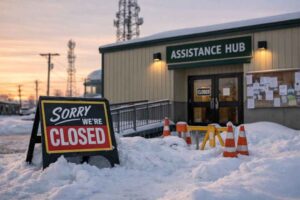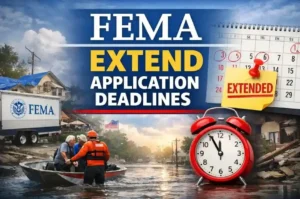Alaska is no stranger to distance. With vast landscapes stretching between communities and towns, it’s no surprise that online learning in Alaska has become more than a trend; it’s now a cornerstone of education. In 2025, Alaskan schools are leading some of the most innovative online education initiatives in the nation, helping students in even the most remote villages connect to world-class learning experiences.
Let’s explore how online education has evolved in the Last Frontier and what it means for the future of Native Alaskan students and communities.
The Evolution of Online Learning in Alaska: A Quick Look
When the COVID-19 pandemic hit in 2020, schools across Alaska rapidly pivoted to remote learning. While urban districts like Anchorage and Fairbanks adapted quickly, rural and bush communities faced significant challenges due to limited internet access.
Fast forward to 2025, and the landscape looks dramatically different:
Year | Schools with Full Online Programs | Students Using Blended Learning |
2020 | 35% | 40% |
2023 | 68% | 58% |
2025 | 85% | 72% |
Source: Alaska Department of Education and Early Development, 2025 Report
Today, 85% of Alaskan schools offer fully online programs, and 72% of students engage in some form of blended learning impressive leap forward.
Why Online Learning Works in Alaska
There’s no denying that Alaska’s unique geography demanded an education model that could bridge the gaps. Online learning in Alaska is succeeding because it directly addresses critical barriers:
Distance
Students living hundreds of miles from the nearest high school now attend classes virtually.
Teacher shortage
Qualified teachers based in urban centers can now teach students across rural communities via video conferencing.
.
Flexible Learning
Students balance traditional subsistence activities, like fishing and hunting, with their coursework.
According to a 2025 survey by the University of Alaska, 82% of Native Alaskan students report that online learning has made education “more accessible and culturally adaptable.”
How Connectivity Was Boosted
One of the biggest hurdles in 2020 was unreliable internet. But thanks to initiatives like Connect Alaska and federal programs like the Emergency Connectivity Fund, internet connectivity has dramatically improved in Bethel and other areas:
Internet Access in Rural Alaska | 2020 | 2025 |
Reliable Broadband Coverage | 32% | 78% |
Average Download Speeds | 50 Mbps |
Today, almost 80% of rural areas have reliable broadband, and programs continue to expand satellite internet access via companies like Starlink and OneWeb.
Top Programs Leading Online Learning in Alaska
Several state-backed programs are driving online learning excellence:
Alaska Digital Academy (ADA)
Offers free online high school courses tailored to Alaskan standards, including cultural heritage electives for Native students.
Alaska Native Science & Engineering Program (ANSEP)
Expanded to virtual camps and online college prep programs, with over 2,000 students enrolled in 2025.
Raven Homeschool
A popular choice for families in remote areas, blending online curriculum with local cultural teachings.
Chugach School District’s CyberLynx
Provides K-12 online options for independent learners across the state, backed by personalized academic coaching.
How Online Learning Honors Native Alaskan Traditions
One of the major successes of online learning in Alaska has been the integration of Native culture into the curriculum.
- Dual-language Programs: Students can now study Yup’ik, Inupiaq, and Tlingit languages online.
- Cultural Courses: History lessons and subsistence practices are incorporated into e-learning platforms.
- Virtual Elders’ Talks: Schools are hosting live virtual storytelling and lessons from community Elders to preserve oral traditions.
In 2025, over 120 schools offers Indigenous-centered online programs, a threefold increase compared to 2022.
Challenges Still Ahead
Despite these victories, a few challenges remain:
- Technology Gaps: About 18% of rural students still rely on school-issued laptops and mobile hotspots.
- Motivation and Engagement: Teachers report that keeping students motivated without in-person interaction is a continuing battle.
- Teacher Training: Professional development for online teaching methods is still catching up, especially in smaller districts.
The Future of Online Learning in Alaska: What’s Next?
By 2030, Alaska hopes to achieve statewide universal access to high-speed internet for all students, regardless of their zip code. Educational leaders also plan to:
- Expand AI-based Personalized Learning Tools: Adaptive technologies that customize lessons for each student’s pace and style.
- Create Virtual Reality (VR) Cultural Field Trips: Imagine students walking through historical Alaskan villages or Arctic ecosystems all from home.
- Boost Dual Credit Courses: Enabling high schoolers to earn college credits through online programs.
Governor Mike Dunleavy’s administration is pushing new legislation in 2025 to support additional funding for tech in rural schools, ensuring no child is left behind.
Final Thoughts
The growth of online learning in Alaska isn’t just a temporary shift’s a long-term transformation of how education works in our state. With better infrastructure, culturally rich curriculum options, and an enduring Alaskan spirit of resilience, online education is helping Native students dream bigger and achieve more than ever before.
As we continue, it’s clear that Alaska’s educational frontier is as vast and full of opportunity as the land itself.
FAQ
How many schools in Alaska offer online learning programs in 2025?
As of 2025, 85% of Alaska’s schools offer full online learning programs, with a strong focus on rural and Native communities.
Is internet access still a problem for remote Alaskan students?
While internet access has improved dramatically (now covering about 78% of rural areas), some students still rely on mobile hotspots and school-issued devices.
Are online learning programs culturally relevant for Native Alaskans?
Yes! Many programs now include Indigenous language courses, storytelling by Elders, and culturally responsive history and science lessons.
Which organizations are leading online learning initiatives in Alaska?
Top leaders include the Alaska Digital Academy (ADA), ANSEP, and Raven Homeschool, among others.












